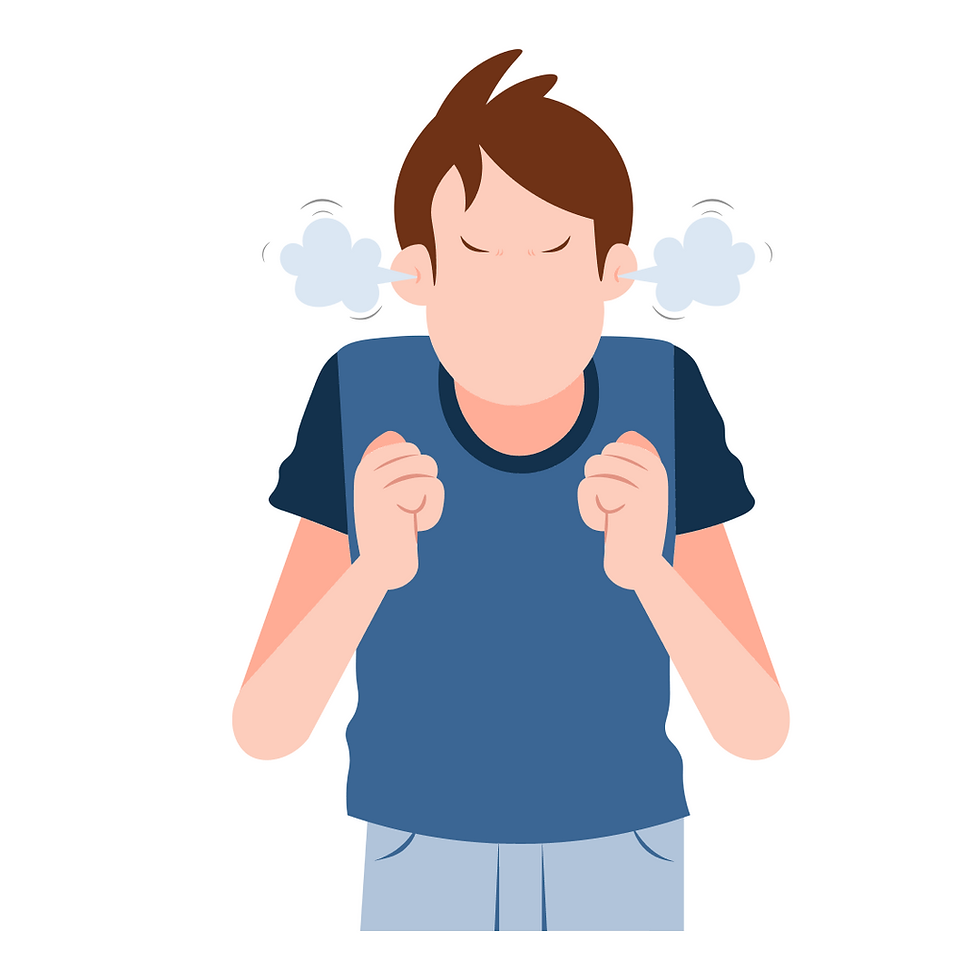Unraveling Eroticized Rage: A Deep Dive into the Arousal Template
- Adam Gelinas

- Dec 2, 2023
- 4 min read
Updated: Jul 23, 2025
Understanding how anger and other emotions play a role in one's arousal template can be an important step in healing and awareness

What Is Eroticized Rage?
Eroticized rage is a complex emotional and psychological dynamic in which anger becomes intertwined with sexual arousal. For many, this fusion is not conscious—yet it can drive patterns of compulsive sexual behavior, risky encounters, and difficulties with emotional intimacy. Instead of expressing or processing anger directly, individuals may redirect it into sexual thoughts, fantasies, or behaviors, often in ways that feel compulsive, confusing, or even shame-inducing.
This concept is particularly relevant in sex therapy and trauma work, as it often appears in clients with unresolved trauma, insecure attachment patterns, or long-standing intimacy struggles. While eroticized rage can show up differently across individuals, it often signals deeper emotional wounds that need attention—not just behavior change.
Understanding the Arousal Template
A key component in understanding eroticized rage is recognizing how one’s “arousal template” is shaped. This term refers to the unique set of emotional, psychological, and situational cues that contribute to what someone finds sexually arousing. In the presence of unresolved pain or trauma, anger can become an activating force in this template—fueling desire in ways that mimic control, dominance, or emotional detachment.
Several factors contribute to the formation of the arousal template:
Early Experiences and Conditioning: Childhood experiences—especially involving neglect, abuse, or exposure to violence—can create associations between anger, danger, and arousal. Over time, these associations may solidify into preferences, fantasies, or compulsive behaviors.
Negative Core Beliefs: Beliefs such as “I’m unlovable,” “People always hurt me,” or “Vulnerability is dangerous” can warp how individuals relate to sex and connection. Eroticized rage often reflects an internal struggle between the desire for closeness and the fear of being hurt or losing control.
Emotional Triggers: Anger, rejection, shame, or fear can become triggers for sexual behavior when they're unconsciously tied to arousal. For some, sexual acting out becomes a way to manage (or avoid) overwhelming emotions.
Cognitive Distortions: Individuals may justify harmful behaviors, objectify others, or confuse control with intimacy. These distortions often reinforce shame cycles and make it difficult to build healthy relationships.
How Eroticized Rage Shows Up
Eroticized rage can be overt or subtle, but it often includes one or more of the following manifestations:
Aggressive or Violent Fantasies: These might include themes of domination, humiliation, or revenge. For some, these fantasies become the primary way they experience arousal.
Compulsive or Risky Sexual Behavior: Acting out with multiple partners, engaging in power-imbalanced relationships, or using sex to numb emotional pain are common patterns.
Role-Playing and Control Dynamics: Some use role-play to safely explore themes of dominance or submission. Others may recreate harmful dynamics from past trauma, sometimes unconsciously, in an effort to "master" their pain.
Avoidance of Emotional Intimacy: Emotional closeness may feel threatening. Instead, individuals may pursue intensity over intimacy—using sex as a substitute for connection rather than a part of it.
Two Common Presentations
1. The Intimacy Avoider: This person seeks out high-intensity sexual encounters but avoids emotional closeness. Anger tied to childhood neglect or abandonment has fused with arousal. Vulnerability feels unsafe, so they use sexual intensity as a shield against deeper connection.

2. The Dominator: This person experiences sexual arousal linked with themes of control and power. Past trauma—such as childhood abuse or witnessing violence—leaves unresolved rage that finds expression in dominant sexual behavior. While not necessarily abusive, their patterns may lack mutuality or emotional depth.

How Therapy Can Help: Strategies for Working with Eroticized Rage
Eroticized rage is not just about behavior—it’s about emotion, history, and identity. Addressing it requires more than behavioral interventions. Effective therapy helps individuals explore the roots of these patterns and develop new ways of experiencing arousal and intimacy.
Here are some therapeutic strategies that have shown effectiveness:
Psychoeducation: Understanding how arousal, emotion, and past experiences intersect is empowering. Naming eroticized rage reduces shame and creates space for growth.
Exploration of Early Attachment and Trauma: Many clients benefit from exploring early relationships and family dynamics to understand how emotional needs went unmet and how anger became sexualized.
Cognitive Restructuring: Therapy often involves identifying distorted beliefs—about self-worth, sex, power, or vulnerability—and replacing them with more accurate, compassionate perspectives.
Emotional Regulation Skills: Learning how to tolerate and express anger in healthier ways is crucial. Therapists may use mindfulness, DBT skills, or emotion-focused techniques to help clients manage triggers.
Trauma-Informed Approaches: For individuals with abuse or complex trauma histories, creating a safe, predictable therapeutic space is essential. Trauma work may involve somatic techniques, EMDR, or parts work (e.g., Internal Family Systems).
Exploring Power Dynamics and Boundaries: Therapy may include open dialogue about fantasies, kink, and consensual role-play. The goal is to distinguish between healthy exploration and reenactments of harm.
Building Healthy Intimacy: Clients learn to create relationships rooted in mutual respect, vulnerability, and emotional safety—where anger no longer needs to fuel desire.
The CSAT Approach
The Certified Sex Addiction Therapist (CSAT) model, developed by Dr. Patrick Carnes, offers a structured and trauma-informed framework for addressing compulsive sexual behaviors—including those involving eroticized rage. CSAT-trained therapists assess underlying drivers such as trauma, attachment wounds, and family of origin issues, while also helping clients understand their arousal templates.
The CSAT model includes:
A staged recovery process, focusing on stabilization, trauma resolution, and relational healing
Group work, task assignments, and partner support when appropriate
A holistic view of sexuality, with a focus on meaning, integrity, and connection
CSAT therapists work collaboratively with clients to develop insight, regulation skills, and pathways to healthier, more authentic sexual expression.
Final Thoughts
Eroticized rage is not simply about "kinks" or "bad behavior." It’s a survival strategy rooted in pain, unmet needs, and unresolved emotion. Through therapy—especially trauma-informed approaches like the CSAT model—individuals can explore the origins of their arousal template, build emotional resilience, and move toward intimacy that feels both safe and satisfying.
Looking for Support?
At First Step Men’s Therapy, we specialize in helping men navigate complex issues like compulsive sexual behavior, trauma, emotional regulation, and relationship challenges. Our experienced therapists—many trained in the CSAT model—offer in-person sessions in Toronto, Ottawa, Oshawa, and York Region, and virtual services across Ontario and Canada.
For more on the CSAT model please visit: SexHelp.com - Get Help For Sex Addiction • SexHelp
LINK: Sexual Addiction Page
Want more? Great video on Eroticized Rage from "Conversations on Sex, Addiction and Relationships". Note: This organization is not affiliated with FSMT.






